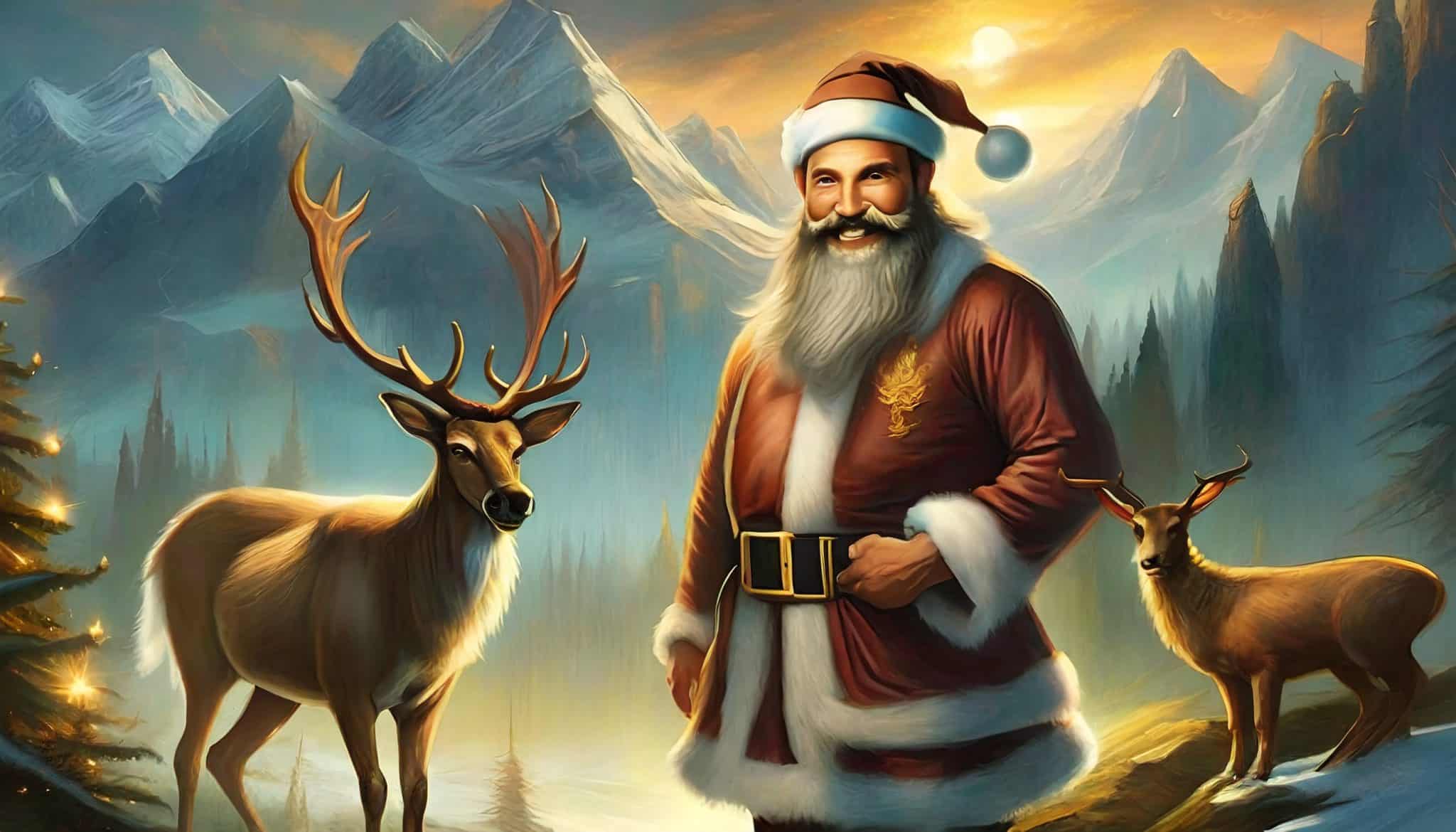He who has not Christmas in his heart will never find it under a tree.
Roy L. Smith
Did you know that many elements of the modern Christmas celebration derive from Pagan traditions? Yes, that’s right! It wasn’t always about Santa Claus and reindeer. From the iconic Christmas tree to the heart-warming exchange of gifts, these elements can be traced back to non-Christian festivals and customs.
What is a Pagan?
A pagan, in broad terms, indicates someone who adheres to a spirituality or religion other than the world’s main monotheistic religions; Judaism, Christianity, and Islam. The word derives from the Latin paganus, meaning ‘country dweller’, imposed upon those who still clung to ‘old ways’ as Christianity spread across Europe. However, in modern times, the term covers many belief systems, each with unique rituals, deities, and traditions.
In the context of this article, we’re particularly interested in two ancient forms of Paganism. Firstly, Roman worship included cults dedicated to Saturn and the mystery religion Mithraism. Then, we delve into the northern traditions of Yule, particularly emulating Norse and Germanic cultures. These pre-Christian spiritual systems bear an astonishing resemblance to some aspects of the modern Christmas celebration.

Ancient Celebrations: Exploring the Winter Solstice and Saturnalia
Imagine this: the deepest, darkest winter, where the cold clings to everything and the days are short. For ancient societies, this time of year wasn’t just a time to hunker down and endure the chill. It was a time of immense celebration, a testament to the resilience of life in the face of hardship. The Winter Solstice, the moment of the year when the Sun is at its lowest daily maximum elevation in the sky, marked the ‘turning of the Sun’ and was a time for community merriment.
Let’s dive into the Roman tradition of Saturnalia, one such winter solstice celebration. Occurring in December, Saturnalia was originally a day of festivities, but like any good party, it soon extended itself to become a week-long feast. The festival was dedicated to Saturn, the Roman equivalent of the Greek God Cronus and a deity associated with time and abundance.
Reversal of Roles and A State of Misrule
Saturnalia was renowned for its carnival-like atmosphere where social roles were reversed. Enslaved people would be served by their masters and be free to do as they pleased. Saturnalia was a rare period of Roman society when the social order was on its own.
Perhaps, you may wonder, ‘Wasn’t this chaotic?’ To you and me, it may seem so. Still, the Romans viewed this period of ‘misrule’ as an integral part of the festival, a way of honouring Saturn’s capacity for renewal, liberation, and the dissolution of hierarchies. It’s a thrilling concept.
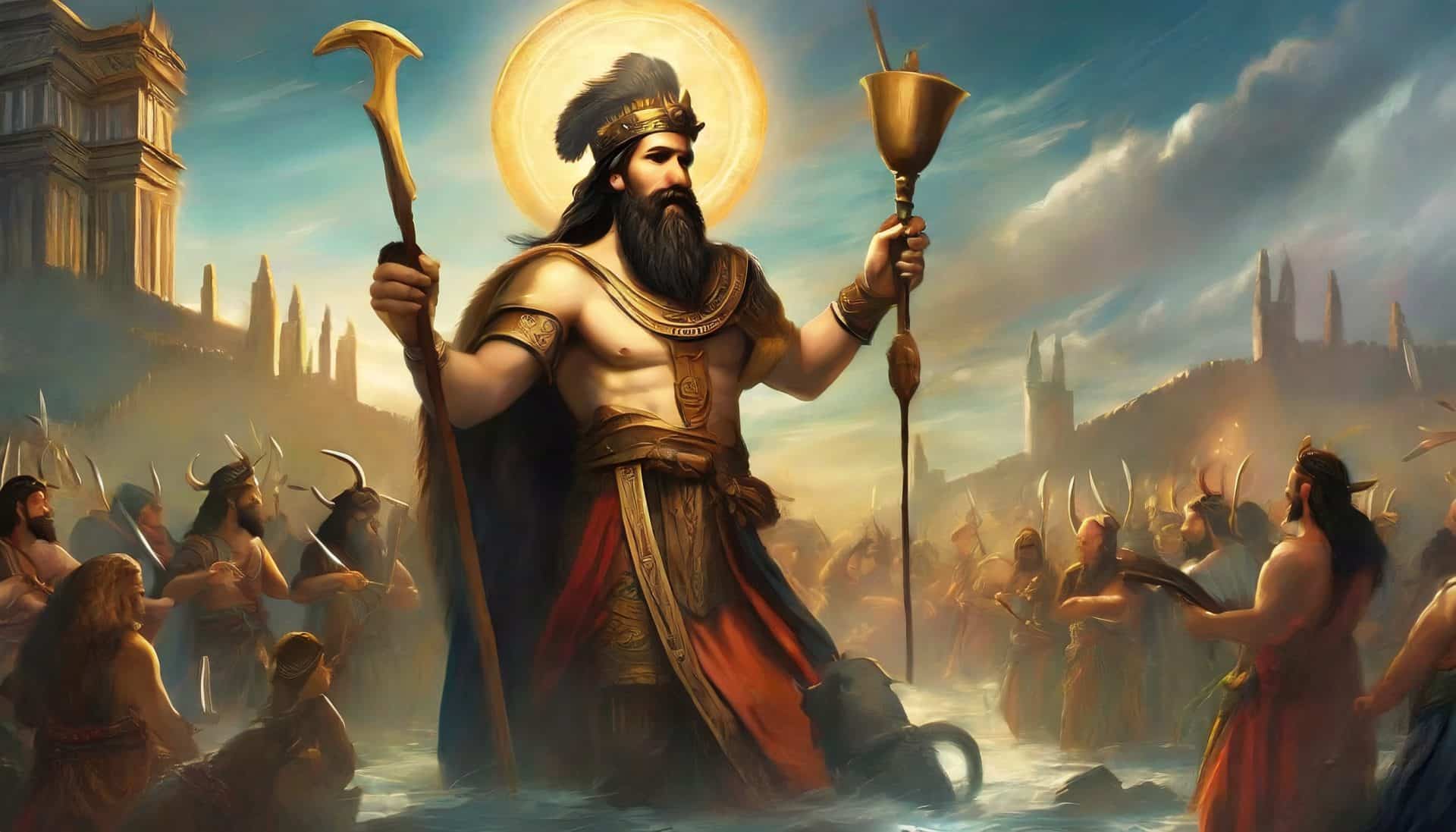
The Lord of Misrule
The prevailing spirit of misrule during Saturnalia was overseen by a figure known as the ‘Lord of Misrule’. This individual, chosen from the lower social ranks, would preside over the festivities, embodying the upside-down world of Saturnalia. Think of them as the master of ceremonies for a week-long, city-wide party.
The Influence on Christmas: A Festive Conviviality
Saturnalia’s exuberant and convivial atmosphere greatly influenced our contemporary Christmas celebrations’ joyous and free-spirited nature. Elements such as feasting, gift-giving, and general good cheer that highlighted Saturnalia found their way into our Christmas festivities. Recognising how deep our holiday traditions stretch back in time is rather humbling.

Yule: Uncovering the Norse Influence on Christmas Traditions
Predating Christianity, the Norse people of Scandinavia celebrated a winter festival known as Yule. This was a festivity that took place around the midwinter solstice, typically lasting for 12 days. Today, you might recognise elements of Yule embedded within our modern Christmas celebrations.
Feasting and the Yule Log
One of the most notable aspects of Yule was the grand feasting. As an event that marked the Sun’s return, it seemed appropriate to celebrate with abundant food and drink. This tradition is undoubtedly familiar today, with many households indulging around Christmas.
Another critical custom of Yule was the burning of the Yule log. This massive piece of wood would be ceremoniously lit on the eve of the solstice. Each spark from the fire was believed to represent a new pig or calf that would be born in the coming year. While the Yule log might not have as prominent a place in modern festivities, the tradition finds its echo in the Yule log cake often baked for Christmas.
The Promise of the Evergreen
The Norse people also venerated evergreen plants for their resilience in rugged winter. They believed these plants had unique properties and symbolised renewal and life, which was particularly significant during the long, dark winter. Hence, they brought branches of these plants into their homes, a custom reimagined today in our tradition of decorating the Christmas tree.
Interestingly, the Norse also associated the evergreen with their sun god, Baldr. In Norse mythology, Baldr dreamt of his death and his mother Frigg, the goddess of love and fertility, sought promises from every object on earth not to harm her son. However, she overlooked the mistletoe. Ultimately, Baldr was killed by an arrow made from mistletoe, and the plant came to represent both tragedy and renewal — a poignant combination echoed in our modern pairing of joy and reflection at Christmas time.
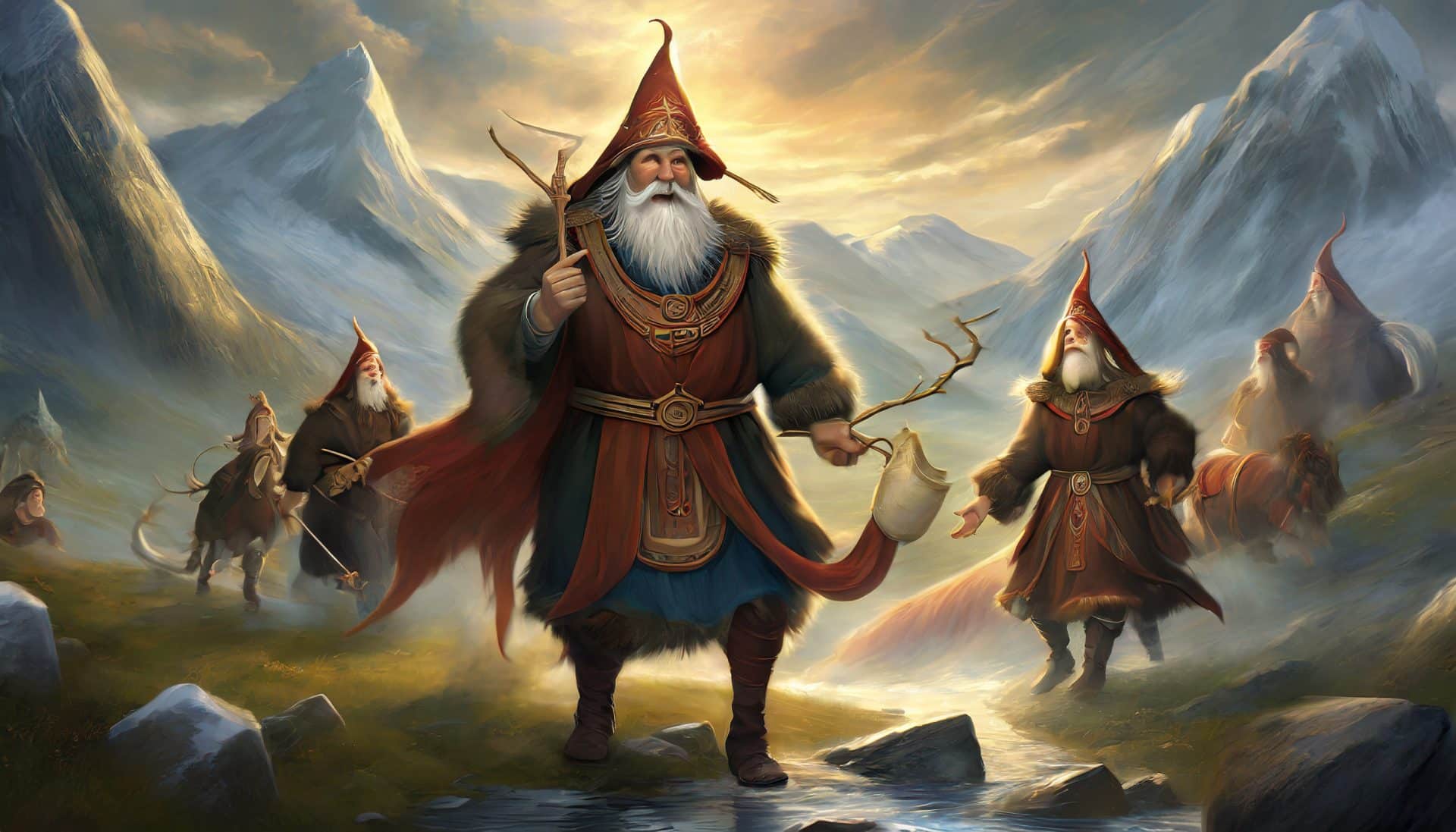
Odin and the Wild Hunt
One must delve into the myth of the Wild Hunt to talk about Yule. Led by the God Odin, the Wild Hunt comprised a ghostly procession in the sky, a spectacle the Norse people witnessed with awe and fear. Odin, also called Jólnir — ‘The Yule One’, further links Yule with modern Christmas through parallels with Santa Claus. Like the gift-bearing Santa, Odin was believed to leave gifts or punishments for children in their boots placed near the hearth.
In summary, while many centuries have passed since the Norse celebrated Yule, their rituals and beliefs continue to influence and enrich our Christmas practices today.
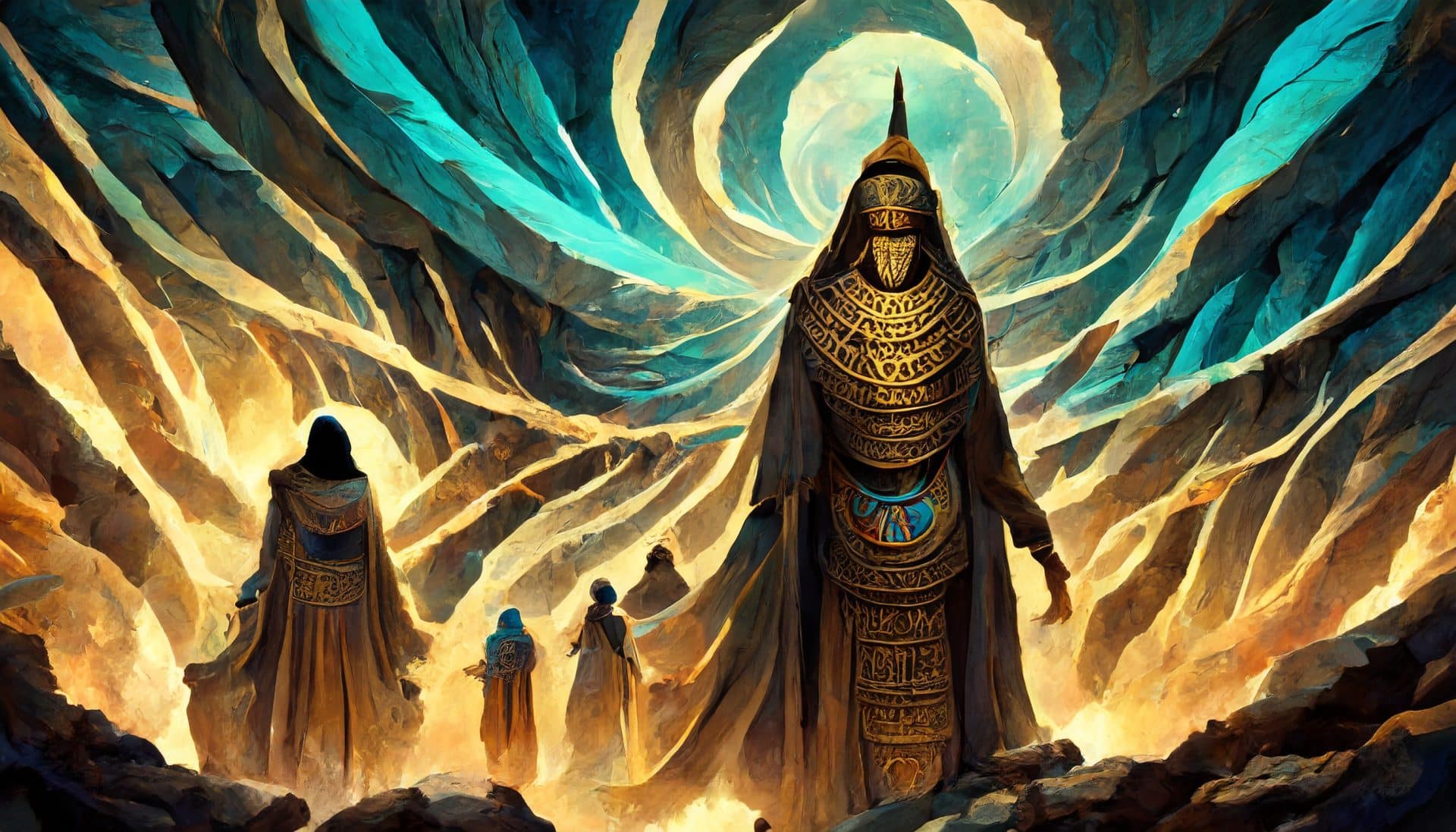
The Influence of Roman Religion: Mithraism and the Birth of Jesus
As we delve deeper into the bedrock of Christmas traditions, we encounter Mithraism. Zoroastrianism-born but Roman-spread, Mithraism centred around worshipping Mithras, a solar deity associated with the Sun and light.
The Birth Date of Mithras
One of the striking similarities that strikes you is the birth date of Mithras. Celebrated on December 25, the birth of Mithras was known as ‘Dies Natalis Solis Invicti, ‘ which translates to the ‘Birthday of the Unconquerable Sun. ‘ This solar relationship was due to the belief that Mithras was a representative of the sun god who fought against the darkness to bring light.
As Christianity began to burgeon amidst the well-set Mithraic Roman society, the church faced issues establishing its foothold. Thus, it adopted December 25, a day already revered by the Romans, as Christ’s birth—this deliberate choice aimed to ease the transition from Mithraism to Christianity.
The Celebration: From Mithraic Banquets to Christian Mass
The adoration of Mithras often included banquets. These weren’t any usual feasts; these represented the meals shared by Mithras and the sun god after defeating darkness. With Mithraism fading into the shadow of Christianity, this banquet tradition transmuted into the celebration of the Eucharist or the Christian Mass.

The Seven Sacraments: Echoes of Mithraic Grades of Initiation
Part of Mithraic religion was the ‘seven grades of initiation’, each relating to a different planet and having unique symbols and ceremonial valuables. As Christianity absorbed the Mithraic followers, the church adopted a somewhat similar concept known now as the seven sacraments.
“Traditions, rituals and symbols are not fixed. They adapt and evolve, moulded by the hands and minds of those who inherit them. This has been as true for Mithraism as for today’s Christmas celebrations.”
This exploration of Mithraism offers a compelling look into how Christianity, in its infancy, absorbed and modified existing traditions to produce a palatable holiday, making the transition from the former faiths to the new one effortlessly smooth for the ordinary people.
Mistletoe and Holly: Symbolism in Pagan Winter Celebrations
Have you ever wondered why you pucker up under a sprig of mistletoe or decorate with holly during the festive season? It’s more than just an old wives’ tale. These plants hold significant meaning within pagan winter celebrations.
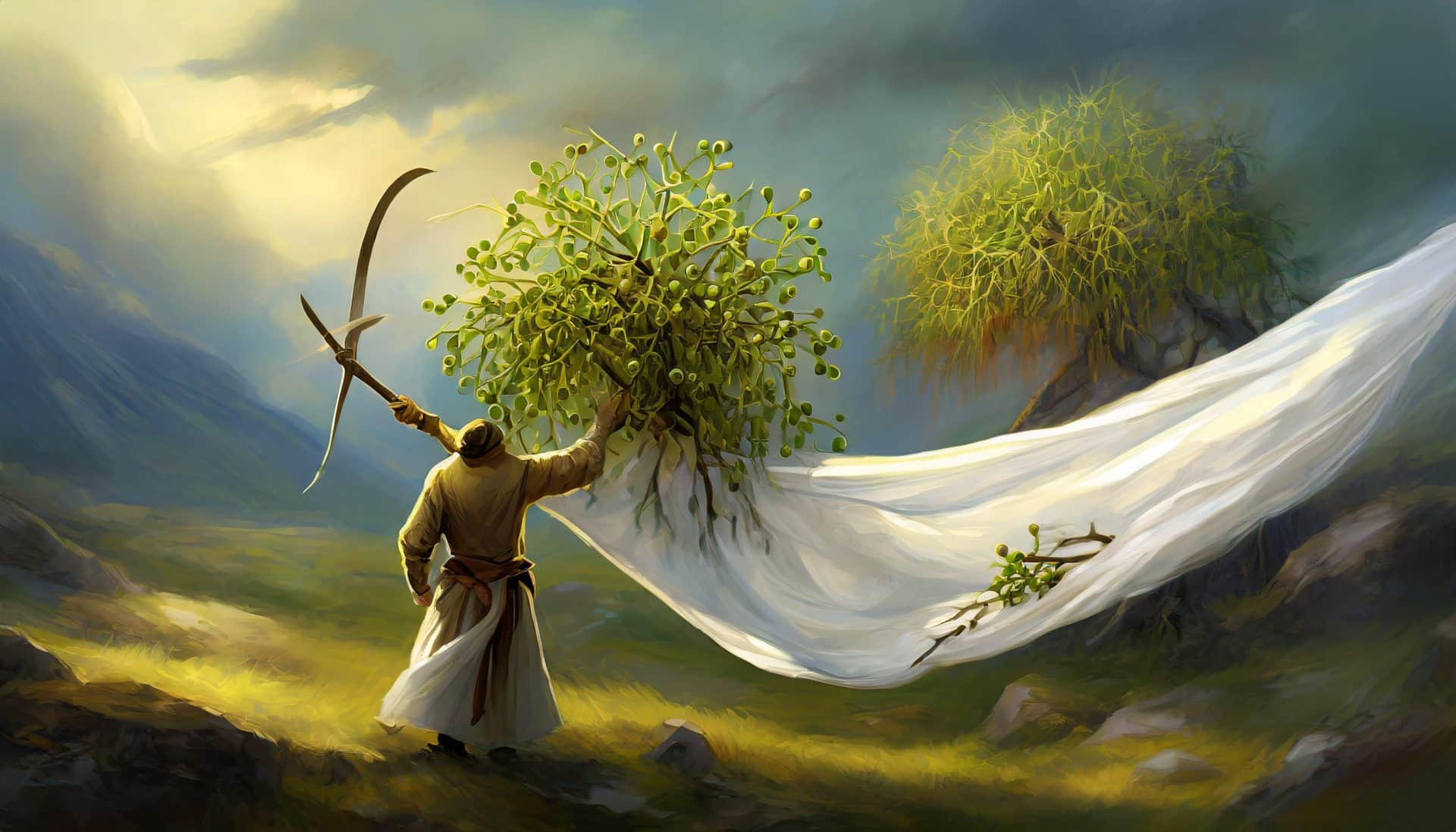
The Magic of Mistletoe
Mistletoe, a parasitic plant that blossoms even in the coldest winters, has long been a symbol of life and fertility. In ancient Druidic traditions, mistletoe was revered and collected in a special ceremony. The plant was cut using a golden sickle and caught in a white cloth as it was believed it would lose its potency if it touched the ground.
This resilient little plant became a token of prosperity, healing, and luck. The custom of kissing under the mistletoe originates from the Norse myth of the goddess of love, Freya, whose son was made invulnerable but was killed by a weapon made of mistletoe. In her grief, Freya declared that mistletoe would never again be used as a weapon but symbolise love instead, hence the tradition of kissing under it.
Holly’s Pagan Roots
Holly, another plant commonly associated with Christmas, has its tradition rooted in pagan Yuletide celebrations. Evergreen plants like holly represent the persistence of life during the winter months when most other plants appear lifeless.
Druids believed holly had protective qualities and would ward off evil spirits. Birmingham University’s Folklore Professor, Dr Juliette Wood, explains, “In pre-Christian times, ‘hanging off the greens,’ such as holly and ivy, was done to ensure the return of vegetation at the end of winter. Holly, in particular, with its bright berries and shiny leaves, would have also brought some welcome colour in the depths of a dark winter.”
Thus, these vibrant plants and myths brighten our homes and Christmas traditions. It echoes ancient pagan customs, long-standing traditions and profound symbolism that transcends time and is woven into the fabric of modern Christmas. We may only sometimes recognise the roots, but they enrich the celebration nonetheless.
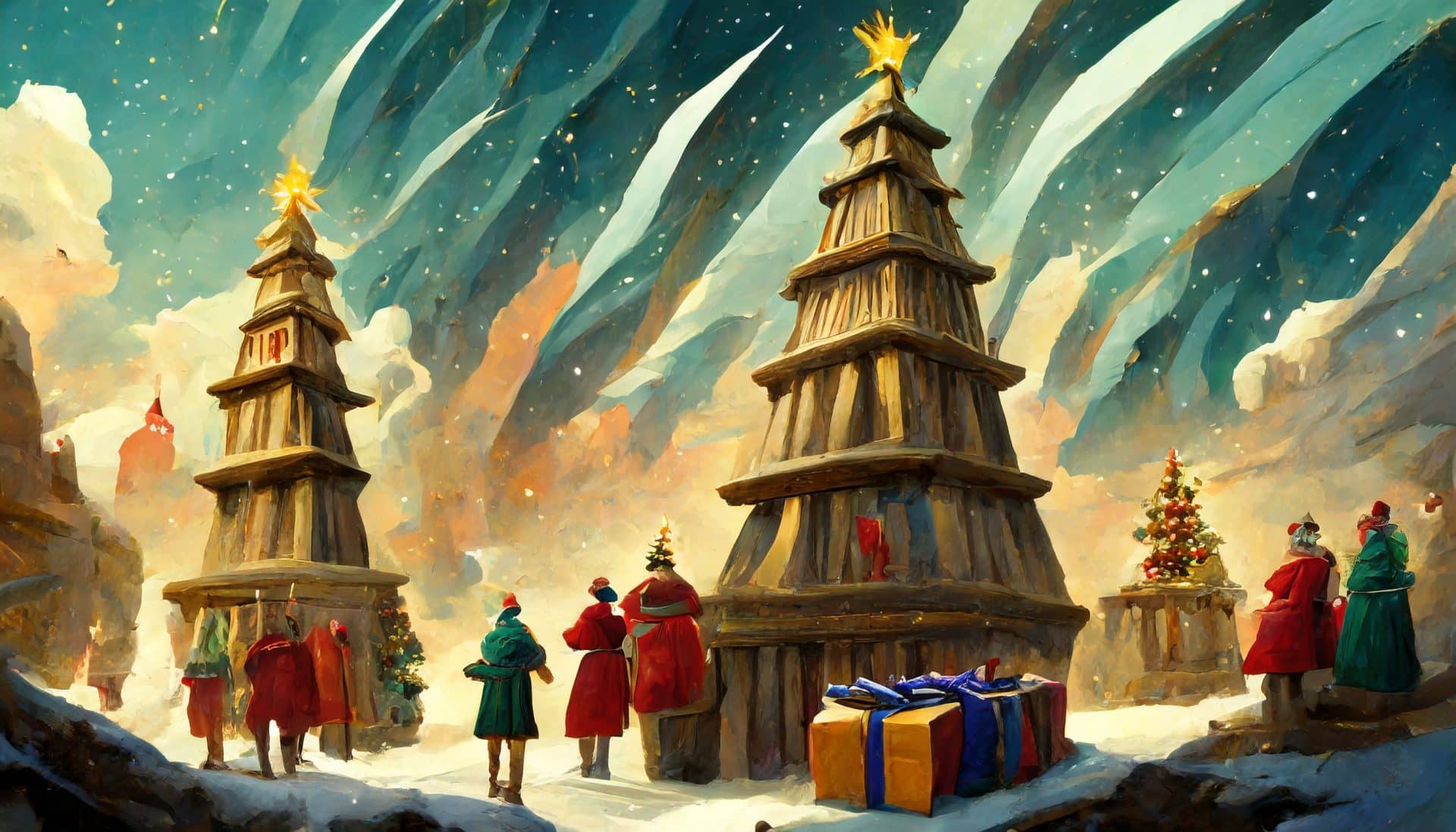
Gift-Giving Through the Ages: From Roman Saturnalia to Modern Christmas
Let’s delve into this compelling story of how a simple act has become a significant part of the Christmas celebration.
The Conception of Gift-Giving
The tradition of exchanging presents during winter celebrations started not with Christmas but Saturnalia – an ancient Roman festival. This festival, which was held in December, allowed the Romans to set aside their warlike pursuits and seek solace in a time of peace, generosity and goodwill. It was during Saturnalia that the tradition of gift-giving was born.
Gifts in Ancient Rome
During Saturnalia, these gifts weren’t grand affairs as they often are today. Instead, Romans gave each other modest items like earthenware figures, wax fruit, and candles. Nobles often exchanged lavish gifts, but the practice was seen as an opportunity for merriment among all people, regardless of social class. It’s also said that Romans gave gifts as a token of good luck for the new year.
Evolution into a Christian Context
When the burgeoning Christian church chose to celebrate the birth of Christ during the same time frame as these pre-existing pagan festivals, they adopted many of the same traditions, including that of gift-giving. But instead of simply being a holdover from pagan tradition, gift-giving was given new meaning in the Christian faith. This tradition was associated with the three wise men (or Magi) who gave gifts to baby Jesus, thus reinforcing the idea of giving during the season.
The Modern Evolution of Gift-Giving
The tradition of gift-giving took on a new meaning in the 19th century with the popularisation of Santa Claus, who brought gifts for ‘well-behaved’ children. This idea, intertwined with the emerging commercialisation of the holiday in the West, escalated the giving and receiving of gifts into a central theme of the Christmas season. It’s hard to imagine Christmas without exchanging presents, whether modest homemade trinkets or more extravagant items. Although the motivations and forms of gift-giving have changed over the centuries, the spirit of generosity and goodwill remains at this time of year.
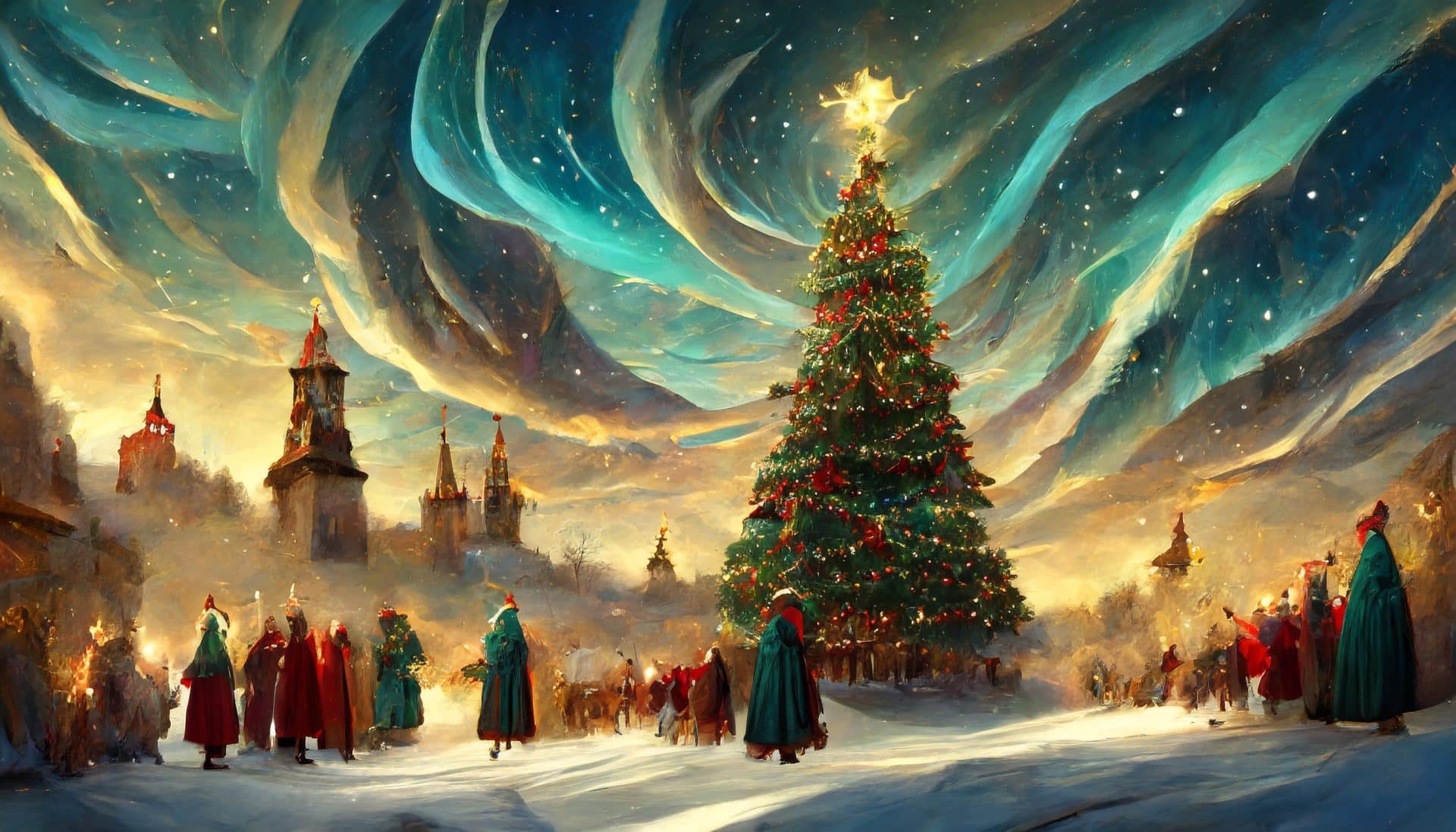
Caroling and Wassailing: The Joyful Sounds of Pagan Winter Celebrations
Carolling and wassailing provide a unique soundtrack to Christmas celebrations, and when tracing the origins of these practices, we land in paganism. These aren’t simply random songs but hold deep meaning and history. So, let’s turn back the pages of history to understand their beginnings.
The Origins of Caroling
Strange as it may seem, ‘carolling’ wasn’t always associated with Christmas. Originating from the Latin’ carula, ‘ which translates to ‘song of praise, ‘ carols were used to accompany dances and were celebrated through various seasons. Only in the Middle Ages did these songs begin to take on a more festive theme and were incorporated into religious celebrations.
Early Christians brought carols under their umbrella to disseminate the story of the birth of Christ, transforming them into a tool for instruction and propagation. Over time, carolling transitioned from a year-round pastime to an essential accompaniment to Christmas time.
The Tradition of Wassailing
Wassailing originates in Anglo-Saxon traditions, particularly in early medieval England. ‘wassail’ comes from ‘waes hael’, meaning ‘be healthy’ or ‘be whole’ in Old Norse—a toast to good health. It was a custom in which the wealthy would ‘wassail’ for the excellent health of their workers and the communal orchard.
During these wassailing events, carol-like songs were sung, often including pleas for a good apple harvest in the following year. This tradition of singing to the health of the apple trees turned into the customary act of roving groups of revellers serenading their neighbours for health and wellness. This practice laid the foundations for what we now know as carolling.
Modern-Day Caroling and Wassailing
Nowadays, carolling has become a heart-warming tradition where groups move from house to house or perform in public spaces, spreading holiday cheer with melodic renditions of popular Christmas carols. Wassailing, which initially involved sharing a communal bowl of spiced cider or ale, has transformed into offering hot drinks or small treats at doors or public gatherings in a symbolic gesture of togetherness and well-wishing.
So, when you next hear the merry notes of a Christmas carol, remember that it’s not just a song but a link to a rich past of community, celebration, and well-wishing, connecting us with centuries-old traditions.
The Twelve Days of Christmas: An Adaptation of Pagan Yuletide Festivities
The Twelve Days of Christmas, a time of merriment and celebration, is more than a famous melody. Its roots lie in the practices surrounding the winter solstice and the Yule season, which celebrates the rebirth of the Sun and the beginning of the lengthening of days.
The Pagan Twelve Days: A Time of Rebirth and Renewal
The ancient Norse and Germanic people broke up the darkest part of winter into a twelve-day celebration known as the “Yule” or “Jól”. They started on the night of the Winter Solstice, which could vary between the 20th and 22nd of December and last until the first few days of January. This period was seen as a time of both anticipation and celebration of the return of the Sun’s light.
People would gather and feast, share gifts, and participate in rituals that involved symbols of life and fertility to encourage the return of the Sun and the eventual arrival of spring.

Adapting The Pagan Yule into The Twelve Days of Christmas
As the church started integrating pagan traditions into the Christian faith, the ‘Twelve Days of Christmas’ celebration emerged. These twelve days were initially tied to the period between two significant Christian feasts: Nativity (Christmas Day) and the Epiphany, which celebrated the Magi’s (Three Kings’) visit to baby Jesus. These twelve days became a time of celebration and reflection in Christian communities, much like the Yule was for Pagans.
Similarities Between the Two Festivities
Given the overlap of timing, it’s not surprising that many of the themes and practices from the old Yule celebration found their way into the Twelve Days of Christmas. Like the Pagan Yule, the Christian Twelve Days were filled with feasting and merriment. Even today, households celebrate with traditional foods, special services, and various cultural practices that harken back to when people gathered to ward off the darkness and celebrate the coming of light.
In conclusion, even though we might know it best as a catchy tune, the ‘Twelve Days of Christmas’ has a rich history intertwined with the pagan Yule season. The shared theme of celebrating the return of light in the darkest period of the year forms a thread that connects the two, demonstrating how traditions adapt and change over time while still preserving their core themes.
The Evolution of Santa Claus: From Odin to St. Nicholas
One of the most recognised symbols of Christmas, Santa Claus, was not born out of a single historical figure or tradition but rather a synthesis of several. His origins are a melting pot of cultures and beliefs, combining elements from the Norse god Odin to the Christian figure of Saint Nicholas to create the jolly, red-suited man we know today.
The Gifts from Odin’s Wild Hunt
During the Yule season, Norse mythology told of Odin, the chief of the gods, embarking on an airborne hunting trip known as the Wild Hunt. Odin travelled through the sky on his eight-legged horse, Sleipnir, which later evolved into Santa’s eight reindeer. Children would fill their boots with straw and carrots for Sleipnir, hoping that Odin would reward their generosity with gifts or sweets, a practice mirrored in the Christmas tradition of hanging stockings.
Saint Nicholas: The Protector and Gift-Giver
In Christian tradition, Saint Nicholas, a 4th-century Byzantine Archbishop of Myra in modern-day Turkey, was widely reputed for his gift-giving habit and protective nature, particularly towards children. His feast day was celebrated on December 6 and often involved giving gifts. This characteristic became central to the emergence of the modern figure of Santa Claus.
American Influence: The Emergence of Modern Santa Claus
The figure of Santa Claus as we know him started to take shape towards the 19th century – notably in America, where various traditions and cultural elements coalesced. The 1822 poem “A Visit from St. Nicholas”, more popularly known as “The Night Before Christmas”, made significant contributions – establishing Santa’s nocturnal gift-giving, a sleigh pulled by eight reindeer, and his red suit trimmed with white fur.
The Commercialisation of Santa Claus
Santa Claus became increasingly commercialised in the late 19th and early 20th centuries. He began appearing in advertisements and shopping centres, cementing his place in Western popular culture. A significant development was the 1931 Coca-Cola advertisements, which popularised a friendly, plump, red-suited Santa Claus – an image that remains popular today.
The Santa Claus we celebrate today is a fusion of historical and mythological figures shaped by societal changes and commercial interests. Even though his image has been modernised and commercialised, at his core, Santa Claus continues to embody the spirit of generosity and the joy of giving, values that are central to the Christmas season.
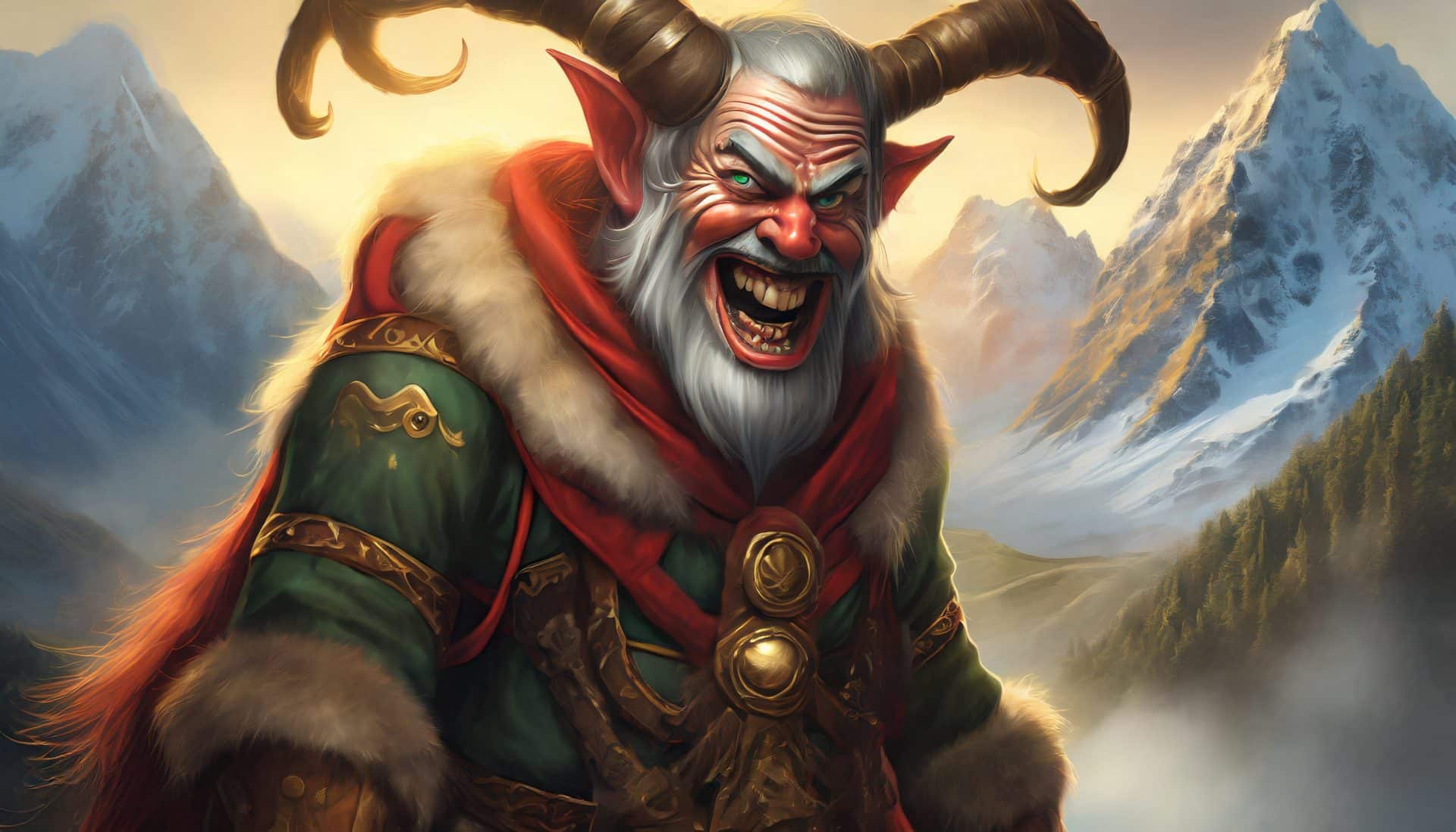
Krampus: Exploring the Darker Side of Pagan-Inspired Christmas Legends
For many, Christmas is synonymous with cheer and warmth, but in specific European folklore, the holiday season has a much darker side. This is highlighted vividly in the figure of Krampus, a half-goat, half-demon creature that punishes misbehaving children — a stark contrast to the benevolence of Santa Claus. But who is this fearsome figure, and what are his origins?
Krampus: A Pre-Christian Supernatural Entity
The roots of Krampus can be traced back to pre-Christian Alpine traditions. With his intimidating presence and reputation for chastising naughty children, Krampus represented a force of order and discipline. These fearsome characteristics were typical of ‘perchten’, supernatural beings prominent in pagan Alpine mythology. When Christianity spread across Europe, many such long-standing pagan myths were adapted and assimilated, with Krampus becoming linked with the Christmas festivities.
The Notorious Krampusnacht: Fears Meet Festivities
Fittingly, Krampus has a special day earmarked for his “celebrations” – December 5, or ‘Krampusnacht’ (‘Krampus Night’). This is the eve of the Feast of St. Nicholas, highlighting the dichotomy between the saint’s kindness and Krampus’ punitive nature. On this night, it was said that Krampus would visit homes to punish disobedient children, underlining the need for good behaviour.
Rituals and Revelries: Parading the Horror
Over the centuries, Krampus has become integral to winter celebrations in many pan-Alpine regions. Krampus processions, or ‘Krampuslauf, ‘ are common in Austria, Germany, Hungary, Slovenia, and the Czech Republic. In these parades, men dress as Krampus, donning fearsome masks, animal furs and rattling chains to scare onlookers, representing a unique blend of horror and holiday spirit.
The Christmas’ Devil’: From Ignominy to Popularity
After a period of suppression during the 20th century, mainly due to political climates and the church’s disapproval, interest in Krampus has been revived recently. His folkloric charm and the compelling narrative of reprimanding the naughty offer a captivating alternative to the often sugary, sweet Christmas narrative. An indicator of his soaring popularity is his image featured on holiday greeting cards, known as ‘Krampuskarten’, sent in jest, representing a darkly humorous subversion of the festive period.
Archetype of Fear: Impact on Modern Culture and Beyond
Adding a thrilling spin to Christmas, Krampus has inspired a variety of modern pop culture references, with movies, TV shows, novels and comic books portraying his menacing character. This folkloric figure also serves as a perfect counter-narrative to the conventional portrayal of Christmas, offering an intriguing glimpse into different festive traditions and showcasing the fascinating diversity of human cultures.
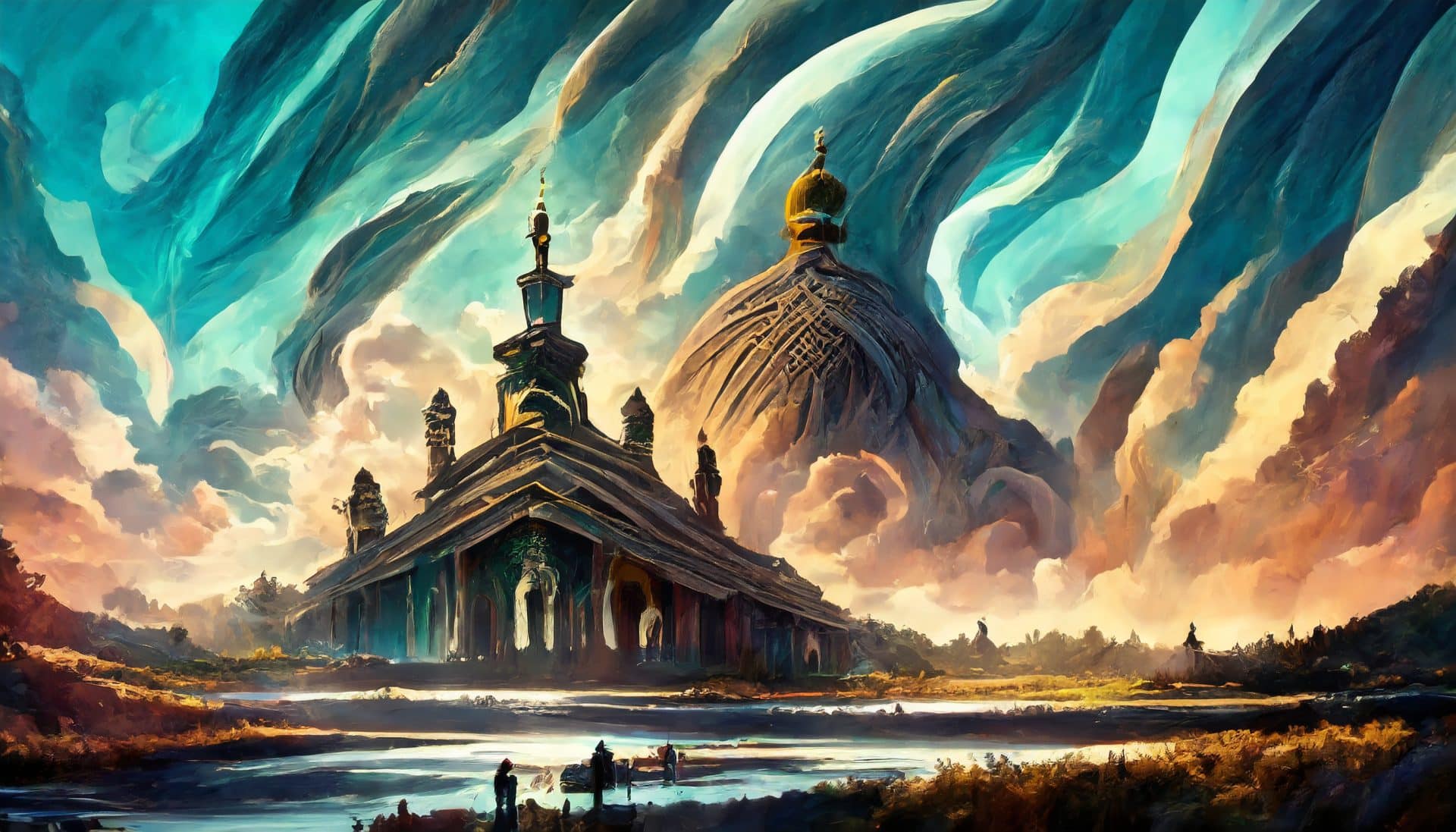
In Summary – the Role of Christianity: How the Church Adopted and Adapted Pagan Traditions
In the early days of Christianity, the church contended with deeply ingrained pagan customs and practices. To usurp these, the church opted to incorporate many pagan traditions into Christian customs rather than discourage them entirely. The nature of these incorporations changed drastically over the years, each shift resulting from a complex interplay of religious, socio-political, and cultural factors.
Enter Saint Nicholas and The Christmas Tree
The incorporation of Saint Nicholas, originally a 3rd-century Greek bishop renowned for his kindness towards children and the poor, into Christmas traditions serves as a prominent example. The narrative of Saint Nicholas eventually transformed into the now-familiar Santa Claus image, partly due to the merging of his story with northern European tales of a god or primary deity who rewarded good children during the winter season.
The introduction of the Christmas tree, a symbol derived from the pagan custom of using evergreen fir trees to celebrate winter festivals, into Christian festivities further illuminates this trend. The church adapted this tradition by reframing it as symbolising eternal life with God. By the 16th century, these trees were being brought indoors and decorated by German Christians, a tradition that spread worldwide over the following centuries.
Conversion of Dates: Aligning Pagan and Christian Holidays
In addition to adopting specific traditions, the Christian church strategically positioned its major holidays to coincide with pagan celebrations. This manoeuvre seemingly served two purposes: to make Christian observances feel more familiar to non-Christians and to diminish the relevance of pagan holidays. For instance, the church assigned December 25 as the birthdate of Jesus Christ, aligning this celebration with the end of the Yule and Saturnalia festivals.
Adapting Pagan Symbols: Holly, Mistletoe and the Yule Log
The use of holly, mistletoe and the Yule log during Christmas originates from various non-Christian cultures. The druids in Celtic mythology revered holly and mistletoe as symbols of fertility and eternal life, while the Norse burned the Yule log during the winter solstice to honour the God Thor. Adopting these symbols, Christianity rebranded the Yule log as a representation of the light of Christ that dispels darkness. At the same time, holly and mistletoe became associated with Christ’s crucifixion and the idea of peace.
Throughout history, the Christian church skilfully absorbed and reinvented these pagan elements to build the Christmas we recognise today. This artful fusion of pagan traditions and Christian doctrine allowed the church to make its new faith more palatable to converts without entirely erasing pre-existing cultural practices.

The Future of Christmas: How Traditions Might Continue to Evolve
They say change is the only constant, and the evolution of Christmas traditions is no exception to this rule. The rich tapestry of Christmas, as we know it, is a blend of multifaceted traditions and symbols derived from various cultures and religions. As we journey into the corridors of speculation, let’s explore how the traditions of this beloved holiday might continue to evolve.
Globalisation and Interconnectedness
Living in an increasingly globalised world, you’re more likely than ever to experience a mix of traditions during the holiday season. Digital technology and social media allow us to glimpse how people celebrate Christmas worldwide, enabling cross-cultural exchanges that could influence your celebrations. From incorporating distinct culinary treats from different cultures into your Christmas dinner to adopting new decorative themes inspired by global styles, the future of Christmas may be characterised by more significant international influence.
The Rise of Eco-Consciousness
As the world grapples with climate challenges, your future Christmas celebrations may become more eco-friendly. From sustainable alternatives to the traditional Christmas tree to hand-made decorations and gifts, you may opt for a green Christmas. You may even consider extending the gift of giving to the planet by reducing waste, conserving energy, and supporting companies with pro-environment policies.
The Impact of Technology
Imagine a Christmas where technological wonders like 3-D holographic messages replace traditional Christmas cards or light displays synchronised to holiday music become the passport to a winter wonderland at the touch of a button. This is more plausible than it might sound. As the world embraces new technologies, the role that technology plays in Christmas could also continue to evolve, creating magical experiences that were previously unimaginable.
Social Changes and Inclusivity
Christmas has always been a time for bringing people closer together to share in peace and goodwill. As our societies continue to become more diverse and inclusive, the future of Christmas could feature traditions that acknowledge and celebrate these changes. Individuals who do not necessarily identify as Christian may embrace the holiday as a cultural celebration and create their unique traditions. The concept of ‘Christmas’ itself might evolve into a broad, inclusive celebration of love, unity, and generosity, resonating beyond any specific religious or cultural limitation.
In sum, the future Christmas will likely remain true to its essence – a time of joyful celebration, warmth, and togetherness. But how you celebrate it might continue to change, reflecting a vibrant dialogue between the past and the present, between your identity and the complex world you live in.

